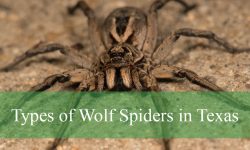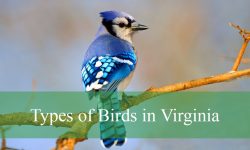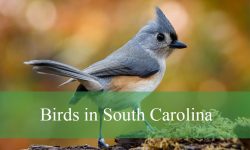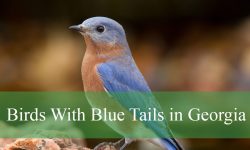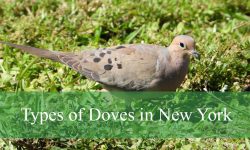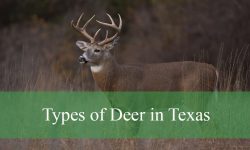Most types of brown caterpillars are native to North America. These caterpillars keep changing their colors due to different growth stages. Others remain brown-red or brown-gray throughout their growth phases.
If you live on the Eastern side of the United States, identifying the exact name of a brown caterpillar can be a daunting experience. We wrote this brown caterpillar identification guide to help identify them from the pictures and descriptions.
Are Brown Caterpillars Poisonous?
Not all types of brown caterpillars are poisonous or venomous. Some species are smooth-bodied and safe to handle without wearing protective gloves.
But these caterpillars have a foul-tasting to prevent potential predators from eating them. The bad taste is due to the type of plants they eat in the garden, park, or yard.
These brown caterpillars can destroy trees, shrubs, and crops. They are known for munching the leaves, stems, and roots of the host plants. (Source: Purdue University).
Most North American brown caterpillars are non-poisonous. But people with sensitive skin might experience nasty rashes or irritation upon touching or handling them.
Different Types of Brown Caterpillars
A dull brown caterpillar can be challenging to identify from others. Here is a list of 20 types of brown caterpillars with pictures and their names:
Brown-Tail Moth Caterpillar
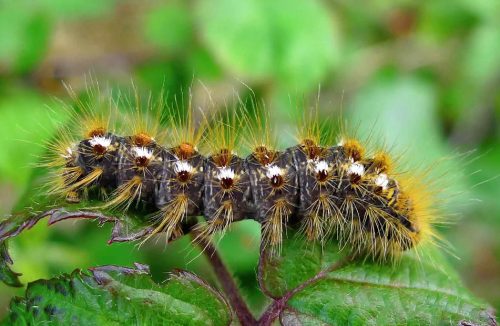
It is a slender caterpillar with a dark-brown body and two conspicuous orange-red spots on its back. The stinging orange or brown hairs cause skin irritation upon touching.
Other distinctive features are the white stripes along its back and reddish-brown patterns on each segment. The moth caterpillar can grow up to 38mm long.
These types of stinging caterpillars feed on the leaves of oak, walnut, maple, ash, birch, and other types of fruit trees. They have a more voracious appetite than other species.
Scientific Name |
Euproctis chrysorrhoea |
Host Plants |
Oak, maple, birch, and ash trees |
Identification Features |
Dark brown body with white stripes along its back and red spots in the middle of the back. |
Woolly Bear Caterpillar
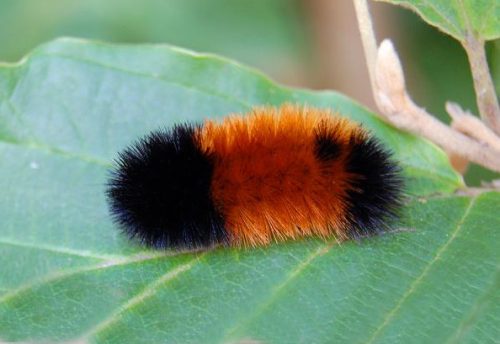
It is a furry caterpillar with an orange-brown band around the middle section and black ends. The hairy black and brown caterpillar looks dangerous but does not sting or bite.
The fuzzy caterpillar can grow up to 60mm long before turning into an orange-brown moth after pupation. These larvae feed on milkweed, elm, asters, birch, and sunflowers.
Woolly bear caterpillars are also called banded woolly bears or black-ended bear caterpillars. Refrain from handling these caterpillars if you have sensitive skin.
Scientific Name |
Pyrrharctia isabella |
Host Plants |
Birch, asters, sunflowers, elm, and milkweed |
Identification Features |
Orange-brown center and black ends. |
Yellow Woolly Bear Caterpillar
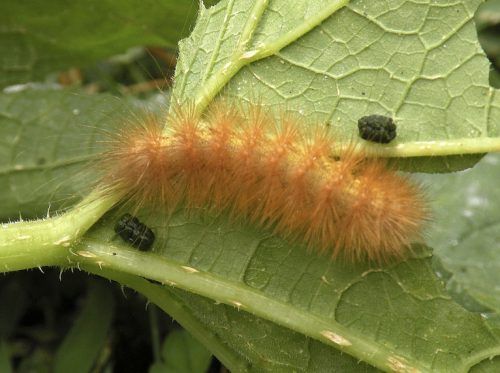
It is a furry brown caterpillar with tufts of irritating hair around its body. The yellow woolly bear caterpillar keeps changing its colors throughout its growth stages.
The caterpillar can grow up to 50mm long and long pencil-like spines are the prominent features for easy identification.
The brown fuzzy caterpillars are destructive since they can defoliate low-growing and ground-cover plants. They are active from May through November.
Scientific Name |
Spilosoma virginica |
Host Plants |
Low-growing and ground-cover plants |
Identification Features |
Brown-tan body with spiny tufts of yellow or orange-red hairs. |
Eastern Tiger Swallowtail Caterpillar

The butterfly caterpillar comes in different color variations. The brown and green larvae are the most common in North America and Europe.
Juvenile Eastern tiger swallowtail caterpillars have chocolate brown bodies with a sizeable white spot around the middle of their abdomen.
The large plump caterpillar can grow up to 55mm long and turns dark green with unusual black, yellow, and blue eye markings.
The Eastern tiger swallowtail caterpillars turn dark brown at maturity before entering the pupal stage. These caterpillars belong to either green or brown caterpillars.
Scientific Name |
Papilio glaucus |
Host Plants |
Ash, cottonwood, tulip, black cherry, and willow |
Identification Features |
Hairless brown caterpillar with a white band in the middle and two small false eyes. |
Pearl Crescent Caterpillar
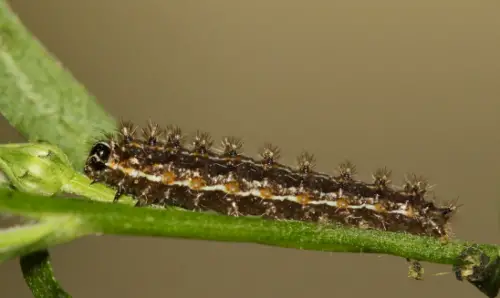
It is another butterfly caterpillar with a dark chocolate brown body along with white spots and eight rows of spiky brown hairs.
The fat brown caterpillar also has a black head that rises for a defensive mechanism. It can grow up to 38mm long.
These brown caterpillars love feeding on the foliage of asters. They turn into black and orange butterflies after pupation.
Scientific Name |
Phyciodes tharos |
Host Plants |
Asters |
Identification Features |
Dark chocolate brown body with white dots in the middle and eight rows of brown spines. |
Ruby Tiger Caterpillar

It is a moth caterpillar with an orange-brown body and blackish-brown head. The furry brown caterpillar can grow up to 30mm long.
The tufts of stinging hairs or spines make these moth larvae dangerous to handle or touch without protective gear. These hairs can cause skin irritation and nasty rashes.
Ruby tiger caterpillars are often seen in the spring and undergo pupation to turn into furry orange moths. These grubs feed on willow shrubs, cabbages, and berry bushes.
Scientific Name |
Phragmatobia fuliginosa |
Host Plants |
Goldenrod, dock, plantain, skunk cabbages, sunflowers, and sweet gale. |
Identification Features |
Light reddish-brown covering of hairs and a yellowish band at the back. |
Imperial Moth Caterpillar
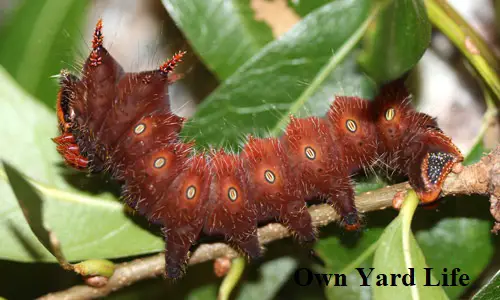
It is a sizeable moth caterpillar with dark brown and burgundy body. The prominent features are the rows of yellow dots along its side’s spikes on each segment.
These caterpillars with thin wispy filaments can grow up to 10 cm long. They undergo several growth stages before pupation.
Imperial moth caterpillars turn into giant dark brown or bright green moths after pupation. Do not handle or touch these caterpillars to avoid skin irritation.
Scientific Name |
Eacles imperialis |
Host Plants |
Pine, maple, oak, and sweet gum trees |
Identification Features |
A row of yellowish oval circles with fine hairs and several fleshy spines covered in white dots. |
Pandora Sphinx Moth Caterpillar
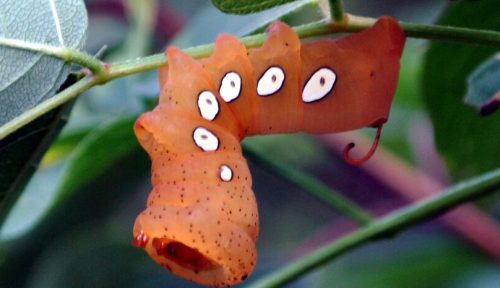
It is a large hairless moth caterpillar with a brown body and large five to six white oval spots along the sides. The curled horn tail is the distinctive feature of identification.
The moth caterpillar becomes dark cinnamon-brown and grows up to 89mm long before pupation. The large brown caterpillar turns into an olive-green moth after pupation.
These caterpillars are native to Midwest and Eastern North America. They feed on the foliage of grapes and Virginia creeper plants.
Scientific Name |
Eumorpha pandorus |
Host Plants |
Grape and Virginia creeper |
Identification Features |
Large hairless caterpillar with black dots around the head, oval white patterns, and curly tail |
Viceroy Caterpillar
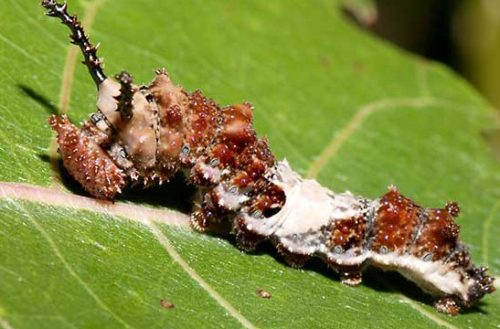
It is another butterfly caterpillar with an unusual patchy orange and brown body. The white markings on the abdomen are the distinctive features for easy identification.
Other additional features are the bumpy body with bristles, spiky antennae, and a patchy appearance. These caterpillars look like birds poop on the branches.
The brown and white caterpillar turns into a beautiful orange and black butterfly that look-like a monarch counterpart.
Scientific Name |
Limenitis archippus |
Host Plants |
Willow trees |
Identification Features |
Orange-brown body with a spiky horn on its head and white-gray markings. |
Striped Garden Caterpillar
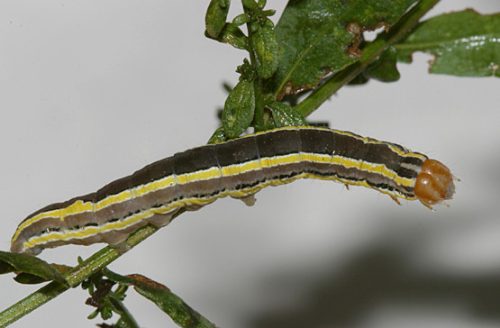
It is a slender brown caterpillar with light yellowish stripes running lengthwise on its body. The caterpillar also has an orangey-brown head and a slightly tapered tail.
The striped caterpillar grows up to 35mm long before pupation. They are harmless to humans and safe to handle or touch.
Scientific Name |
Trichordestra legitima |
Host Plants |
Milkweed, pea, goldenrod, grasses, and mustard. |
Identification Features |
Pale brown worm-like caterpillar with bright yellow or creamy white stripes. |
American Painted Lady Butterfly Caterpillar
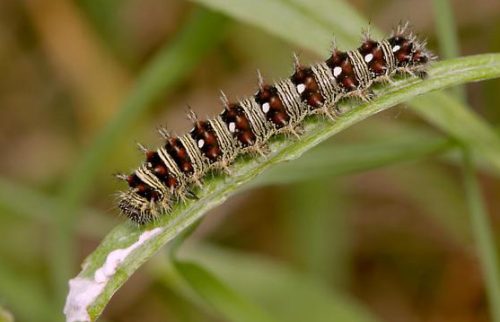
The butterfly caterpillar has a dark brown body with yellow bands, several spiny spikes, and white dots. The red bases for the spiny spikes are distinctive features.
Another additional feature for easy recognition is the creamy white line running lengthwise on its body. These caterpillars grow up to 35mm long.
These colorful butterfly caterpillars feed on the leaves of ironweed, asters, pussytoes, or spoon-leaf cudweed.
Scientific Name |
Vanessa virginiensis |
Host Plants |
Spoonleaf cudweed, aster, and ironweed |
Identification Features |
Dark-brown body with yellow and black rings, red and white dots with spiny looks. |
Unicorn Moth Caterpillar
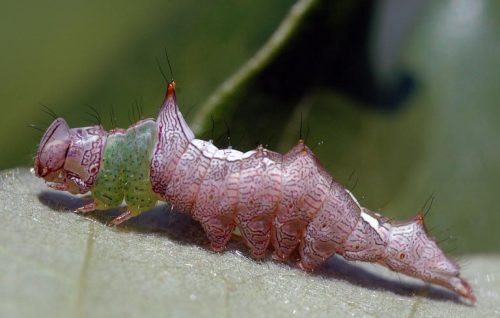
It is a plump brown caterpillar with dark brown mottled markings on its body. It also has two green segments near the head for easy identification.
The brown larva has a triangular tail end with thin black spines and a prominent horn near the front. It can grow up to 38mm long.
These caterpillars feed on the leaves of birch, apple, elm, and willow trees. They are often seen from May through October.
Scientific Name |
Schizura unicornis |
Host Plants |
Alder, apple, aspen, elm, birch, hickory, and hawthorn. |
Identification Features |
Brown caterpillar with mottle brown patterns and green segments near the head. |
Yellow-Striped Armyworm Caterpillar
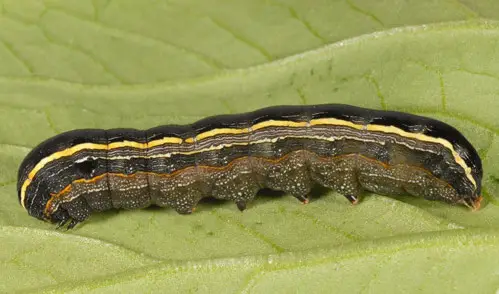
The brow and yellow-striped worm-like caterpillar is also called a cotton cutworm. It has a brown body with two conspicuous yellow stripes on its back.
The yellow-striped armyworm caterpillar is also covered in white spots and random black patches. These caterpillars can grow up to 35mm long.
These garden pests can defoliate cabbages, and onions, and feed on tomato fruits. They turn into furry brown moths after pupation.
Scientific Name |
Spodoptera ornithogalli |
Host Plants |
Tomato fruits and cotton |
Identification Features |
Brown caterpillar with a continuous yellow stripe along each side. |
European Corn Borer Caterpillar
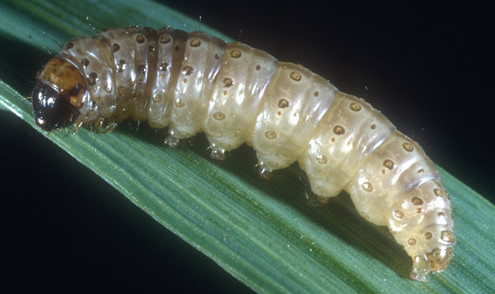
These caterpillars have light yellow-brown bodies with small round dots on each segment. These tan-colored larvae also have blackheads and smooth bodies.
European corn borer caterpillars feed on maize or corn grains. They can also chew the stems and leaves of other garden crops. They can grow up to 20mm long at maturity.
Scientific Name |
Ostrinia nubilalis |
Host Plants |
Maize plantations |
Identification Features |
Slender caterpillar with beige-brown body and blackish-brown head. |
Southern Flannel Caterpillar
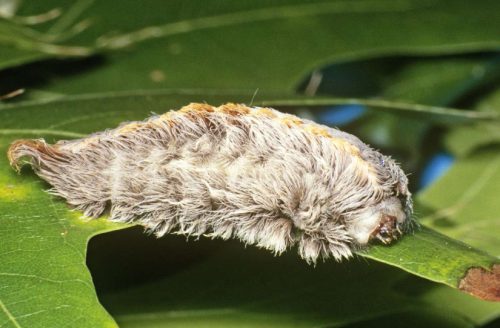
It is a brown hairy moth caterpillar with bristles that cause skin irritation or nasty rashes upon handling or touching. The fuzzy venomous caterpillar can grow up to 25mm long.
Southern flannel caterpillar is also called puss caterpillar, slug caterpillar, or fire caterpillar. The stinging spines and soft Persian cat resemblance are the reasons for the names.
Scientific Name |
Megalopyge opercularis |
Host Plants |
Oak and elm trees |
Identification Features |
Hairy brown caterpillar with soft golden-brown bristles. |
Puss Moth Caterpillar
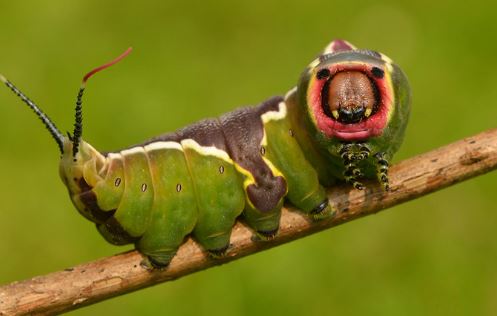
It is a bloated-looking caterpillar with a brown body. The bright white lines over the abdomen are the distinctive features for easy identification and classification.
The chocolate-brown appearance is prominent during the last growth stage. The forked tail and head rising habit are other features for easy recognition.
These caterpillars also extend the pinkish whiplike antennae when threatened. A juvenile caterpillar is black with a long tail and later turns dark brown before pupation.
Scientific Name |
Cerura vinula |
Host Plants |
Willow and poplar trees |
Identification Features |
Dark brown body with prominent white stripes along the back. |
Pink-Spotted Hawkmoth Caterpillar
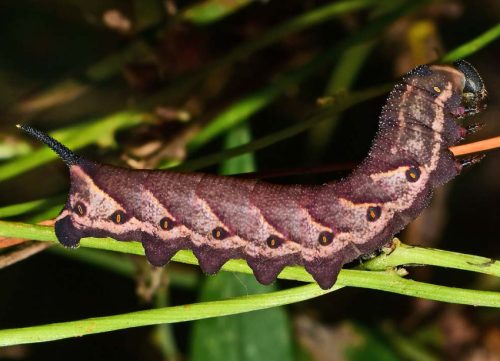
It is a stout horned caterpillar with a dark brown body that’s almost black. The cream triangular patterns along the sides and two orange lines are the distinctive features.
The large caterpillar can grow up to 8cm long and hails in the United States. These larvae feed on the leaves of sweet potatoes and jimsonweeds.
Scientific Name |
Agrius cingulata |
Host Plants |
Jimsonweed and sweet potatoes |
Identification Features |
Hairless dark-brown body with prominent triangular markings, pointed tail, and dorsal stripes. |
Monkey Slug Caterpillar
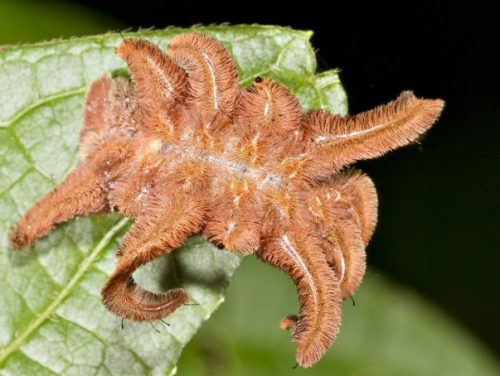
It is an unusual-looking hairy caterpillar with a light brown body and hairy arms. The squashy-looking hairy spider has tiny spines that cause skin irritation upon handling.
If you have sensitive skin, refrain from coming into contact with monkey slug caterpillars to avoid allergic reactions.
Scientific Name |
Phobetron pithecium |
Host Plants |
Hickories, birches, ashes, dogwood, oaks, and apple trees. |
Identification Features |
Light brown squashy hairy spider with leg-like structures. |
Achemon Sphinx Caterpillar
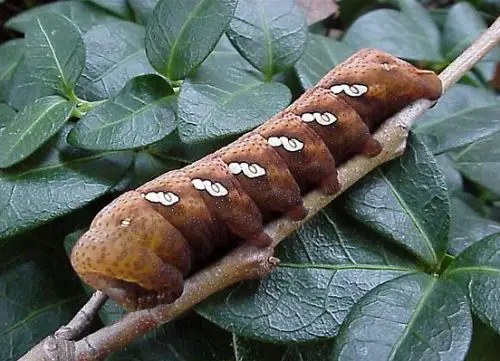
The caterpillar keeps changing its color due to different growth stages. A juvenile achemon sphinx caterpillar is green that later turns brown at maturity.
These caterpillars have multiple types of white spots all over their bodies with conspicuous eyespots. They love feeding on grape vines and Virginia creeper plants.
These sphinx caterpillars are often seen in August and November. They are native to Florida and Texas States.
Scientific Name |
Eumorpha achemon |
Host Plants |
Wild grapes, Virginia creeper, and other vines |
Identification Features |
Brown caterpillars with white dots on their back. |
Red-Fringed Emerald Caterpillar

These dark brown caterpillars are native to North America and love dwelling on hardwood trees like white oak, black walnut, and river birch.
They defoliate these hardwood trees in the park and woodlands. Refrain from touching or handling these larvae if you have sensitive skin.
Scientific Name |
Nemoria bistriaria |
Host Plants |
White oak, black walnut, and river birch |
Identification Features |
Small dark brown caterpillars |
People Who Read This Also Read:

